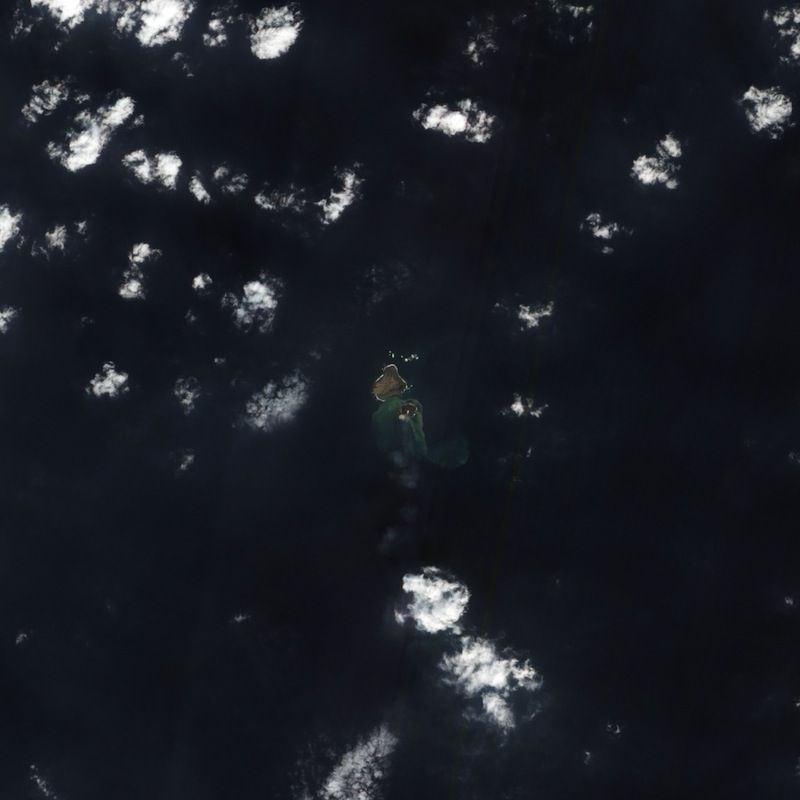
Japan's Newborn Volcanic Island Seen from Space (Photo)

A NASA satellite snapped a photograph of a tiny new island that rose out of the Pacific Ocean a few weeks ago after a volcanic eruption.
A camera aboard the space agency's Earth Observing-1 (EO-1) satellite captured this natural-color image as it passed over the still-steaming black cone on Dec. 8.
Japanese officials have named the new island Niijima. It is located about 620 miles (1,000 kilometers) south of Tokyo in the Bonin Islands, an archipelago that includes the island of Iwo Jima and sits on the western edge of the Pacific "Ring of Fire," a hotbed of seismic and volcanic activity.
The baby island was born on Nov. 20, 2013, when ash and tephra (solid fragments ejected by a volcano) shot into the sky from an underwater volcano, as stunning pictures from the blast show. Niijima's larger neighbor, an island named Nishino-shima, marks the top of a massive submarine volcano, Japanese Coast Guard officials said.
The photo from EO-1 shows that churned-up marine sediments and volcanic materials have discolored the waters around the new island, according to NASA's Earth Observatory.
It was feared that pounding waves would sweep away the islands loose sediments and rocks, causing Niijima to sink back into the ocean. But the fledgling island is apparently getting bigger. Niijima had grown three times its initial size by early December, rising up to 82 feet (25 meters) above sea level and expanding to an area of 13.8 acres (56,000 square meters), according to the Earth Observatory.
Follow Megan Gannon on Twitter and Google+. Follow OurAmazingPlanet @OAPlanet, Facebook and Google+. Original article on LiveScience's OurAmazingPlanet.
Sign up for the Live Science daily newsletter now
Get the world’s most fascinating discoveries delivered straight to your inbox.












